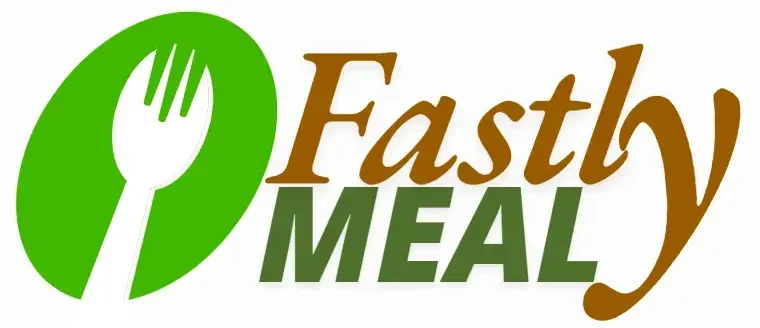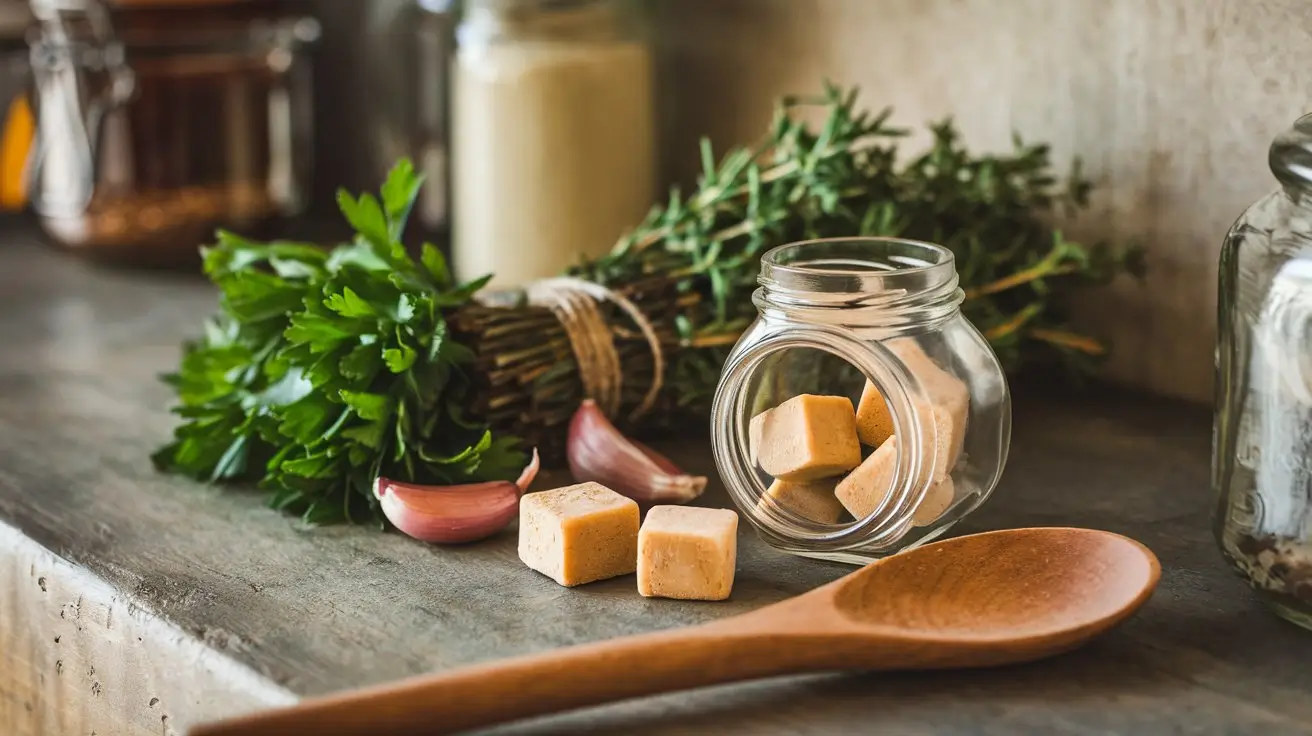Ever wondered how a simple spoonful of something could suddenly transform your soups, stews, and marinades into a five-star dish? Well, say hello to chicken bouillon! It’s that magic ingredient that chefs and home cooks alike swear by. But first, what exactly is it, and more importantly, how can you make the most out of it in your cooking? So, without further ado, let’s dive into the delicious world of chicken bouillon.
Table of Contents
What Is Chicken Bouillon?
Think of chicken bouillon as the Swiss Army knife of the culinary world. It’s versatile, flavorful, and ridiculously easy to use. At its core, chicken bouillon is a concentrated form of chicken broth, either in cube, powder, or paste form. It dissolves easily in water, creating an instant savory base for countless recipes.
For more flavor-boosting ideas, explore our Ultimate Mexican Chicken Marinade for Grilling, which shows how seasoning can elevate simple ingredients.
But there’s more to it than meets the eye. Chicken bouillon isn’t just about convenience, it’s about bringing out the richness in your dishes. Whether you’re cooking for a cozy dinner or impressing guests, chicken bouillon is like having a chef in your cupboard.
The Origins
Where did this little powerhouse of flavor come from? To begin with, bouillon traces its roots to French cuisine, where the word itself means “to boil.” Initially, bouillon referred to a clear soup or broth made by simmering bones, meat, and vegetables. However, over time, chefs sought a way to preserve this rich flavor without the need for refrigeration. As a result, they developed concentrated bouillon.
oday, chicken bouillon has transcended borders, becoming a staple in cuisines worldwide. For instance, in Asia and Latin America, it is commonly used in unique ways to enhance the flavors of traditional dishes. Moreover, this rich tradition has significantly influenced recipes like Caldo de Pollo, a classic chicken soup cherished throughout Latin America.
Common Types
When it comes to chicken bouillon, you’ve got options:
1. Cubes
The most popular form, bouillon cubes, are small but mighty. Each cube packs a punch of chicken flavor and is perfect for quick recipes.
2. Powder
Great for precision, powdered chicken bouillon allows you to control the intensity of flavor. A little sprinkle here, a dash there, it’s all up to you!
3. Paste
The rich, creamy texture of paste bouillon makes it ideal for sauces and gravies. Plus, it blends seamlessly into hot liquids.
How Is Chicken Bouillon Made?
You might be wondering, how do they fit so much flavor into something so small? Chicken bouillon is typically made by dehydrating chicken broth and adding seasonings like salt, garlic, onion, and herbs. The result is a concentrated flavor bomb that can be stored for months without refrigeration.
Fun fact: Some brands use natural chicken fat for that extra burst of authenticity, while others focus on vegetable-based ingredients for a healthier twist.
Discover creative ways to incorporate bouillon into dishes like Garlic Parmesan Chicken Pasta for a flavorful twist.
“Chicken bouillon is like a culinary cheat code, it turns the ordinary into extraordinary with just a spoonful!”
What’s in Chicken Bouillon?
Here’s where things get interesting. Chicken bouillon may be tiny, but it’s packed with ingredients that give it its iconic taste:
- Dehydrated Chicken Broth: The foundation of that savory goodness.
- Salt: Enhances flavor and acts as a natural preservative.
- Herbs and Spices: Think garlic, onion, parsley, and celery seed.
- Natural Flavors: Some brands add a touch of yeast extract for umami.
The exact recipe varies between brands, but the goal is always the same: to deliver rich, chicken-forward flavor in a convenient form.
Is Chicken Bouillon Healthy?
Ah, the million-dollar question. While chicken bouillon is undeniably delicious, its health profile depends on how you use it. Here’s the scoop:
- Low in Calories: A single serving has minimal calories, making it diet-friendly.
- High in Sodium: Bouillon often contains a significant amount of salt. If you’re watching your sodium intake, look for low-sodium varieties.
- No Fat or Sugar: Most chicken bouillons are free of fats and added sugars, making them a lighter option than traditional broths.
Moderation is key. Use chicken bouillon as a flavor enhancer, not a primary food source, and you’ll enjoy its benefits without overdoing it.
Comparing Chicken Bouillon to Chicken Broth
Chicken bouillon and chicken broth, aren’t they the same? Not quite! Here’s a quick comparison:
| Feature | Chicken Bouillon | Chicken Broth |
|---|---|---|
| Form | Cube, powder, paste | Liquid |
| Convenience | Instant, long shelf life | Requires refrigeration |
| Flavor Intensity | Highly concentrated | Milder, more subtle |
| Usage | Recipes requiring quick prep | Ideal for sipping or slow cooking |
The key takeaway? Use bouillon for convenience and broth for depth.
Why Use it in Recipes?
Here’s the thing: chicken bouillon isn’t just for soups. In fact, its versatility makes it a go-to ingredient for all sorts of dishes. For example, imagine adding a touch of bouillon to your pasta water, rice, or even mashed potatoes. As a result, it’s like a magic trick for your taste buds!
Need to jazz up a marinade? A teaspoon of chicken bouillon can make your chicken or tofu sing with flavor. Want a quick soup base? Just dissolve it in water and add your favorite veggies and protein.
Looking for more inspiration? Check out our guide on Leftover Rotisserie Chicken Recipes to minimize waste while maximizing flavor.
“When in doubt, add chicken bouillon. It’s like seasoning’s best friend!”
Creative Recipes with Chicken Bouillon
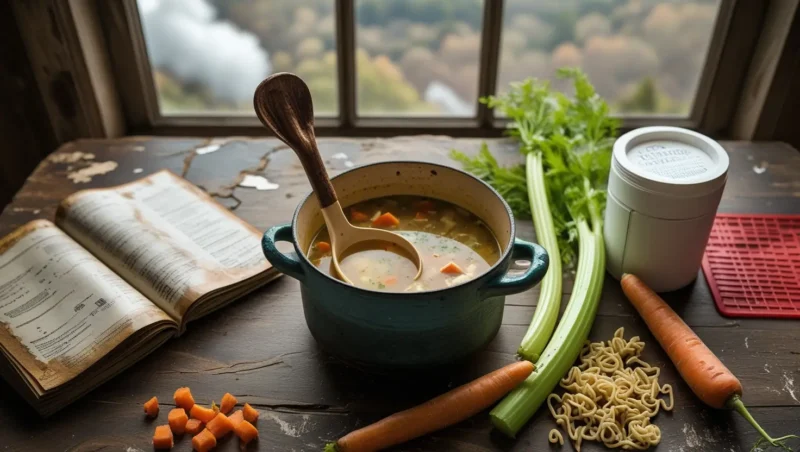
Let’s talk recipes! Chicken bouillon is one of those ingredients that can elevate almost anything. Whether you’re whipping up a quick dinner or going for something gourmet, this powerhouse of flavor has got your back. Here are some creative ways to incorporate it into your cooking:
1. Soups and Stews
Chicken bouillon is practically made for soups and stews. To begin with, dissolve a cube or a teaspoon of powder into hot water, and you’ve got a savory base ready to go. For example, try it in classics like chicken noodle soup or lentil stew to achieve that rich, homemade taste. In short, it’s a simple way to enhance flavor in your favorite dishes.
2. Rice Dishes
Transform plain rice into a flavorful side dish by cooking it in water infused with chicken bouillon. Add a pinch of saffron or a handful of sautéed vegetables for a dish that pairs beautifully with any main course.
3. Pasta Sauces
Did you know chicken bouillon can boost the flavor of your pasta sauces? Stir a bit into your Alfredo or tomato-based sauces for a restaurant-quality finish.
4. Marinades
Mix chicken bouillon with olive oil, lemon juice, and your favorite herbs to create a marinade that will make your proteins pop. Whether it’s chicken, fish, or tofu, the results will have everyone asking for seconds.
5. Vegetable Dishes
Roasted vegetables get a savory upgrade when tossed with a chicken bouillon-infused glaze. Try it with carrots, zucchini, or even Brussels sprouts for a flavor-packed side dish.
Enhancing Soup Flavors with Chicken Bouillon
You know that feeling when your soup tastes okay but not great? Chicken bouillon is your secret weapon. It doesn’t just add saltiness, it enhances the overall depth of flavor. Here’s a quick tip:
- Pro Tip: Dissolve a bouillon cube in a small amount of hot water before adding it to your soup. This ensures it blends evenly without clumps.
Bouillon works wonders in creamy soups like potato or mushroom. It also shines in brothy soups like minestrone, where the added richness can take the dish to the next level.
“Chicken bouillon is the unsung hero of soups, simple to use, yet transformative in flavor.”
as a Base for Marinades
Marinades are all about building layers of flavor, and chicken bouillon can help you nail it every time. Because it’s so concentrated, a small amount goes a long way. Here’s how to use it effectively:
- The Basics: Combine bouillon paste or powder with oil, an acid (like vinegar or citrus), and seasonings.
- Add a Twist: Experiment with ingredients like honey, soy sauce, or garlic to create unique flavor profiles.
Use this marinade for grilling, roasting, or even slow cooking. The bouillon not only flavors the meat but also helps tenderize it, thanks to its salt content.
Substituting Chicken Bouillon in Vegetarian Cooking
Wait, can vegetarians use chicken bouillon? While traditional bouillon contains chicken, there are plenty of plant-based alternatives out there. Brands now offer vegetarian and vegan-friendly bouillon cubes made with a blend of vegetables, herbs, and spices.
These substitutes are perfect for creating the same rich, umami flavor in vegetarian soups, stews, and casseroles. And yes, they’re just as convenient!
For more ideas dor Uses, Substitutes and Nutrition, check our ultime Guide Chicken Bouillon.
“Vegetarian-friendly bouillon proves you don’t need chicken to bring the flavor.” 🌱
Should You Make it at Home?
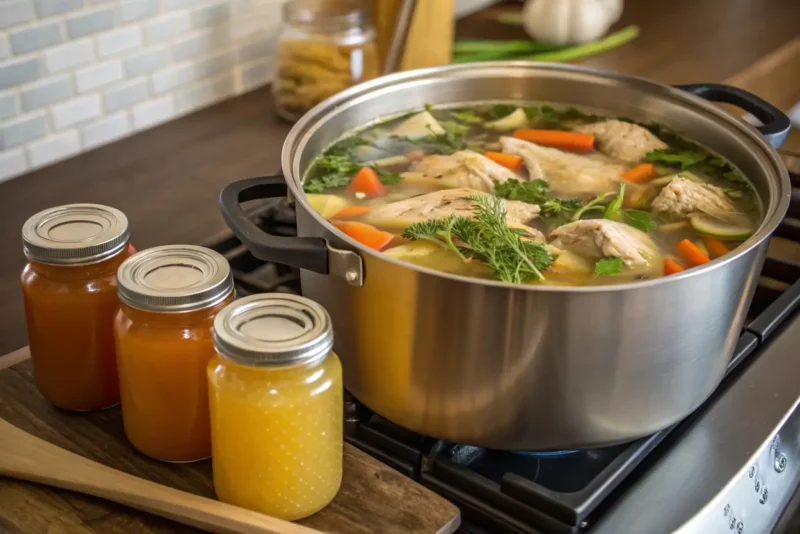
Store-bought chicken bouillon is convenient, but there’s something special about making it yourself. Homemade bouillon allows you to control the ingredients and customize the flavor to suit your preferences.
Here’s how to make your own:
Ingredients:
- 1 lb chicken bones or scraps
- 1 onion, chopped
- 2 carrots, diced
- 2 celery stalks, diced
- Garlic, herbs, and spices to taste
Instructions:
- Simmer all the ingredients in a large pot of water for 4-6 hours.
- Strain the liquid, then reduce it further until it becomes a thick concentrate.
- Freeze in ice cube trays for easy portioning.
Homemade bouillon is free of preservatives and additives, making it a healthier option. Plus, it’s an excellent way to use up leftovers!
Popular Store-Bought Brands
If you’re not up for making your own, don’t worry, there are plenty of high-quality store-bought options. Some of the most popular brands include:
- Knorr: Known for its wide range of flavors and global availability.
- Better Than Bouillon: A favorite for its paste-like consistency and rich taste.
- Maggi: A go-to brand in many international kitchens.
Each brand offers its own twist, so try a few to see which one suits your taste buds best.
Pros and Cons of Homemade Chicken Bouillon
Homemade Chicken Bouillon Pros:
- Customizable to your liking.
- Free of preservatives and artificial flavors.
- Often more cost-effective in the long run.
Cons:
- Time-consuming to make.
- Requires freezer space for storage.
If you’ve got the time, homemade bouillon is worth it. But for those busy weeknights? A store-bought cube will do just fine.
How to Choose the Best
Not all bouillons are created equal, so how do you pick the best one? Look for these key factors:
- Ingredient List: Choose options with minimal additives and artificial flavors.
- Sodium Levels: If you’re watching your salt intake, opt for low-sodium versions.
- Texture: Paste bouillons often dissolve better and have a richer flavor.
- Dietary Needs: Vegan or gluten-free? Many brands now cater to specific diets.
“The right chicken bouillon can make or break a dish, so choose wisely!”
How to Properly Store Chicken Bouillon
Chicken bouillon is a versatile ingredient, but proper storage is the key to keeping it fresh and flavorful. Luckily, it doesn’t require much effort. Here’s what you need to know:
Storage Tips for Cubes and Powder
- Keep It Dry: Store bouillon cubes or powder in an airtight container to prevent moisture from clumping it up.
- Cool, Dark Place: A pantry or cabinet away from direct sunlight is ideal.
- Original Packaging: If you don’t transfer the bouillon to a container, make sure the original packaging is sealed tightly after each use.
Tips for Paste Bouillon
Paste bouillon requires a little more care since it’s more perishable.
- Refrigerate After Opening: Always store paste bouillon in the fridge to maintain its quality.
- Use Clean Utensils: Avoid dipping dirty spoons into the jar to prevent contamination.
Shelf Life: Does Chicken Bouillon Expire?
Yes, even chicken bouillon has a shelf life. However, it tends to last quite a while.
- Cubes and Powder: These are shelf-stable and can last up to two years if stored properly.
- Paste: Usually has a shorter shelf life, about six months to a year once opened.
How to Tell If It’s Gone Bad?
Look for these signs:
- A strange or rancid smell.
- Discoloration or visible mold.
- Clumps in powder or cubes that don’t dissolve easily.
When in doubt, toss it out!
“A fresh jar of chicken bouillon is like a good friendship, reliable, flavorful, and always there when you need it.”
Is it Gluten-Free?
If you follow a gluten-free diet, you might wonder whether chicken bouillon is safe to use. The answer depends on the brand.
What to Look For (H3)
- Certified Gluten-Free Labels: Always check the packaging. Brands like Herb-Ox and Knorr offer gluten-free options.
- Ingredient List: Watch out for hidden gluten in thickeners or additives like wheat starch.
For those with celiac disease or gluten sensitivity, sticking to certified gluten-free bouillon is the safest choice.
Chicken Bouillon for Low-Sodium Diets
Chicken bouillon is known for its bold flavor, but it often comes with a hefty dose of sodium. Thankfully, there are options for those looking to cut back:
- Low-Sodium Varieties: Many brands now offer reduced-sodium bouillon cubes and powders.
- DIY Bouillon: Making your own bouillon at home allows you to control the salt content.
Here’s a trick: If you only have regular bouillon on hand, dilute it more than usual and add fresh herbs to balance the flavor.
Vegan and Vegetarian Alternatives
For plant-based eaters, there’s no need to miss out on the convenience of bouillon. Vegan-friendly options use a mix of vegetables, herbs, and spices to mimic the savory depth of chicken bouillon.
Popular Vegan Bouillon Brands
- Better Than Bouillon Vegetarian Base: Rich and flavorful, with a variety of vegetable-based options.
- Edward & Sons Not-Chick’n Cubes: A classic choice for soups and stews.
- Rapunzel Vegetable Bouillon: Organic and packed with herbs.
Plant-based bouillon isn’t just for vegetarians, it’s also great for adding flavor to side dishes like quinoa or roasted veggies.
in Asian Cuisine
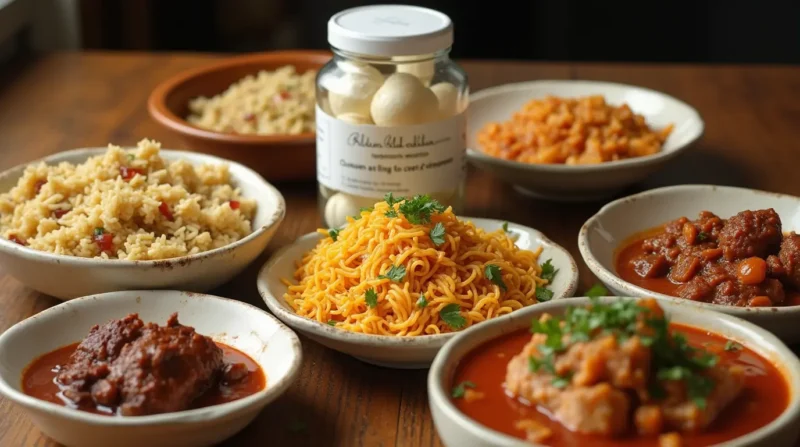
Asian cooking often relies on chicken bouillon to enhance dishes. Whether it’s a hot bowl of ramen or a plate of stir-fried rice, bouillon provides that unmistakable umami flavor.
How It’s Used
- Soups and Noodles: Chicken bouillon adds depth to broths for dishes like pho or udon.
- Rice and Stir-Fries: A pinch of bouillon can bring fried rice or stir-fried veggies to life.
In many Asian households, chicken bouillon is as essential as soy sauce or sesame oil.
in Latin American Dishes
In Latin America, chicken bouillon is a must-have ingredient. From hearty stews to vibrant rice dishes, it’s used to build rich, satisfying flavors.
Common Uses (H3)
- Arroz con Pollo: Bouillon gives this classic chicken and rice dish its savory backbone.
- Sopa de Fideos: A noodle soup often enriched with bouillon for a comforting taste.
- Beans and Lentils: Adding bouillon during cooking enhances the flavor of legumes.
“In Latin America, chicken bouillon is more than just an ingredient, it’s a tradition.”
Frequently Asked Questions
Can you drink chicken bouillon alone?
Absolutely! Dissolve it in hot water, and you’ve got a simple, savory broth that’s perfect for sipping on a cold day.
How much chicken bouillon should you use?
A general rule of thumb is one cube or teaspoon per cup of water. But feel free to adjust based on your taste preferences.
Is chicken bouillon safe for pregnant women?
Yes, in moderation. However, due to its high sodium content, consult your doctor if you’re concerned about salt intake.
What are the signs of good-quality chicken bouillon?
High-quality bouillon dissolves easily, has a natural flavor, and doesn’t taste overly salty or artificial.
Can you use chicken bouillon in cold dishes?
Yes! Use it to flavor salad dressings or cold pasta dishes by dissolving it in a bit of warm water first.
Why Chicken Bouillon Is a Kitchen Staple
From soups to stir-fries, chicken bouillon proves itself as one of the most versatile ingredients in your pantry. Whether you’re in a pinch or looking to elevate your dish, it’s there to deliver flavor with minimal effort.
Elevate your dishes by exploring Marry Me Chicken Pasta, where creamy bases and rich flavors seamlessly come together. Furthermore, if you’re looking for complementary recipes, consider learning how to enhance sides with Smoked Mac and Cheese, creating the ultimate comfort food pairing.
